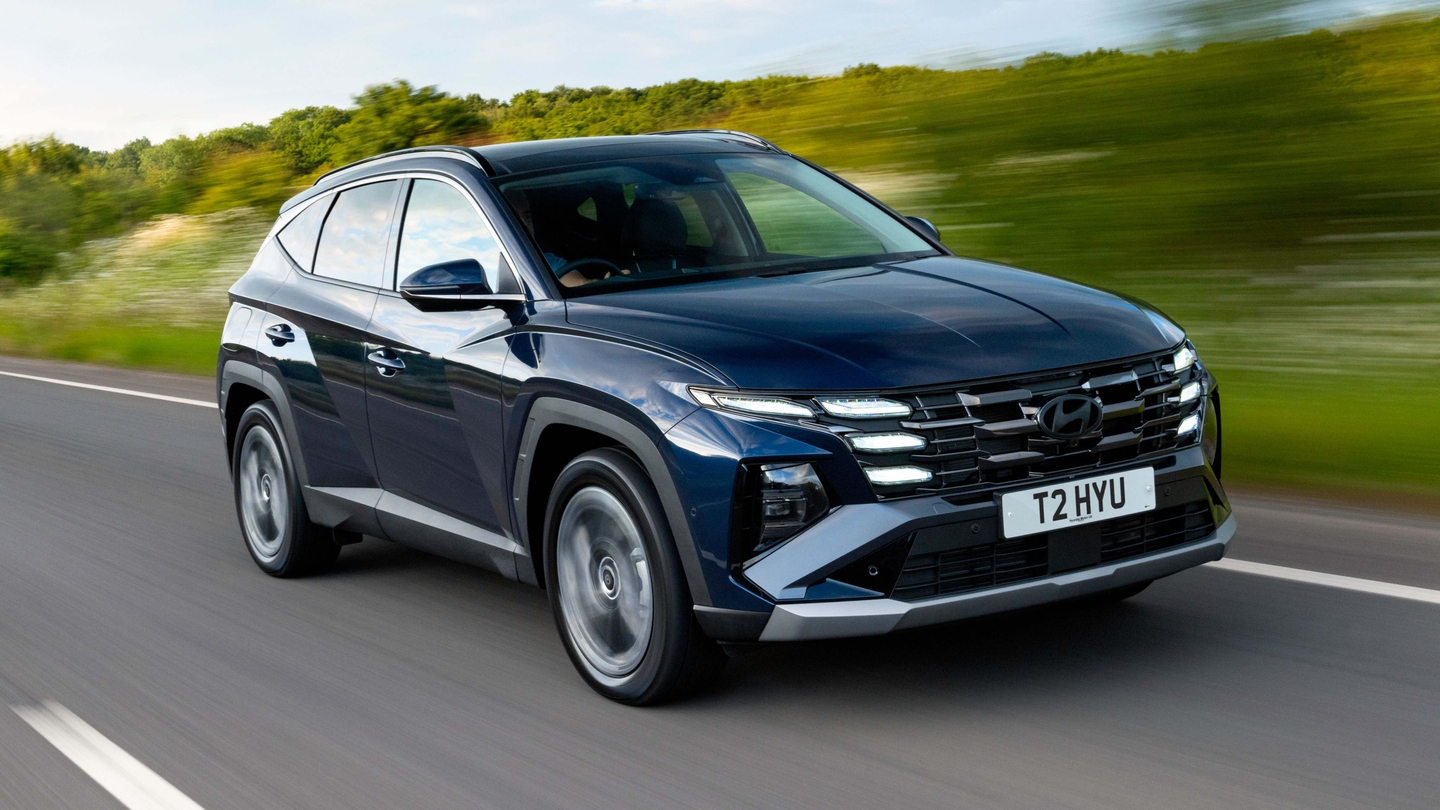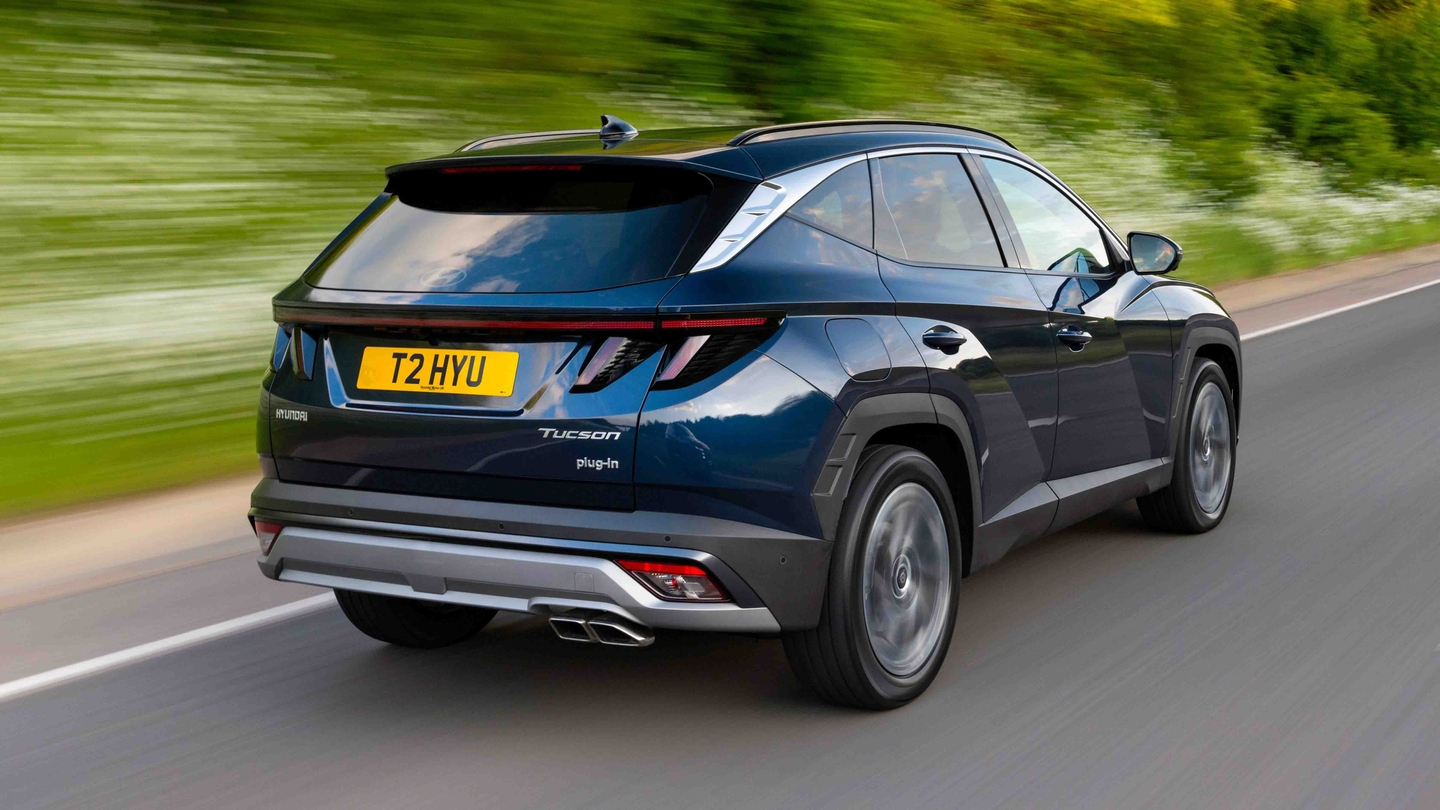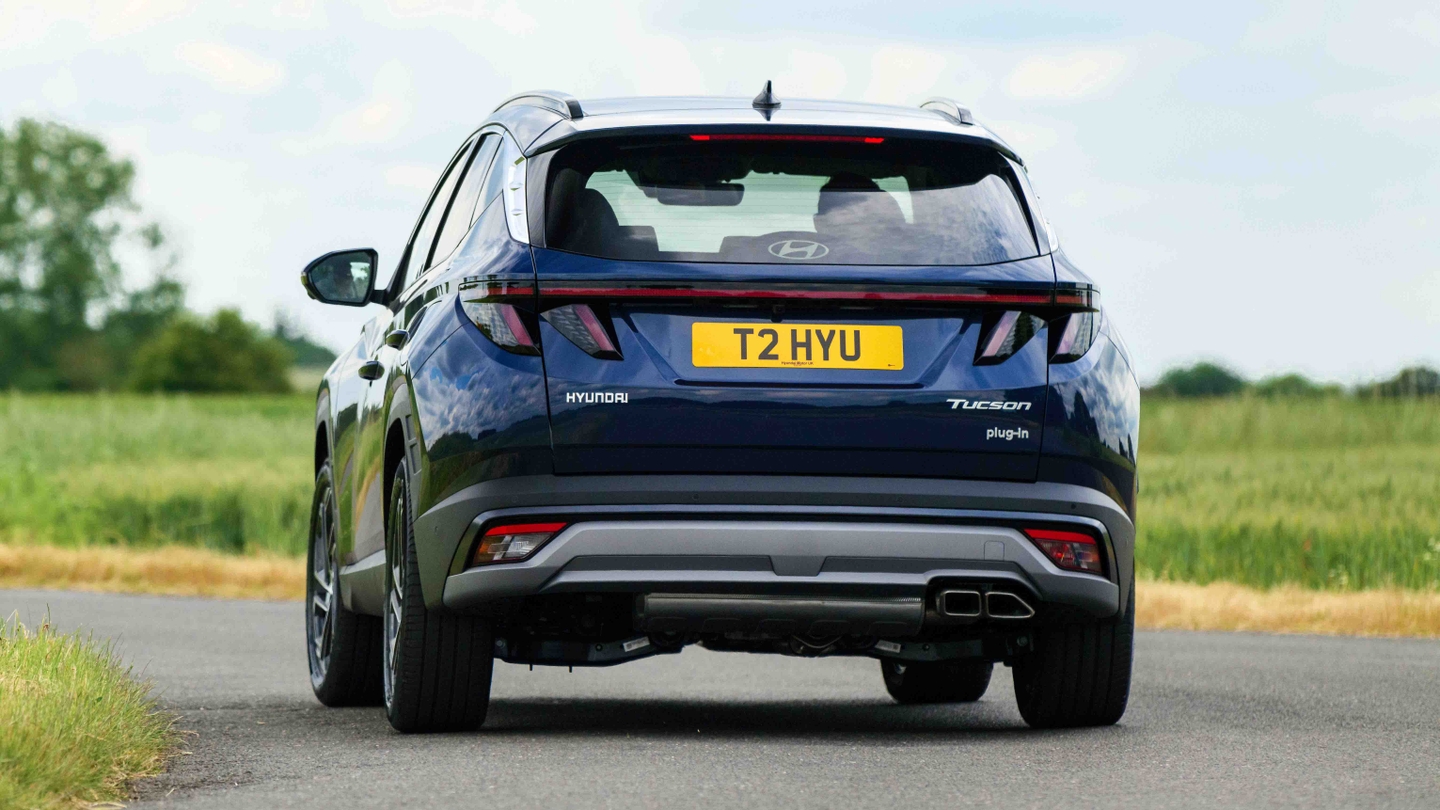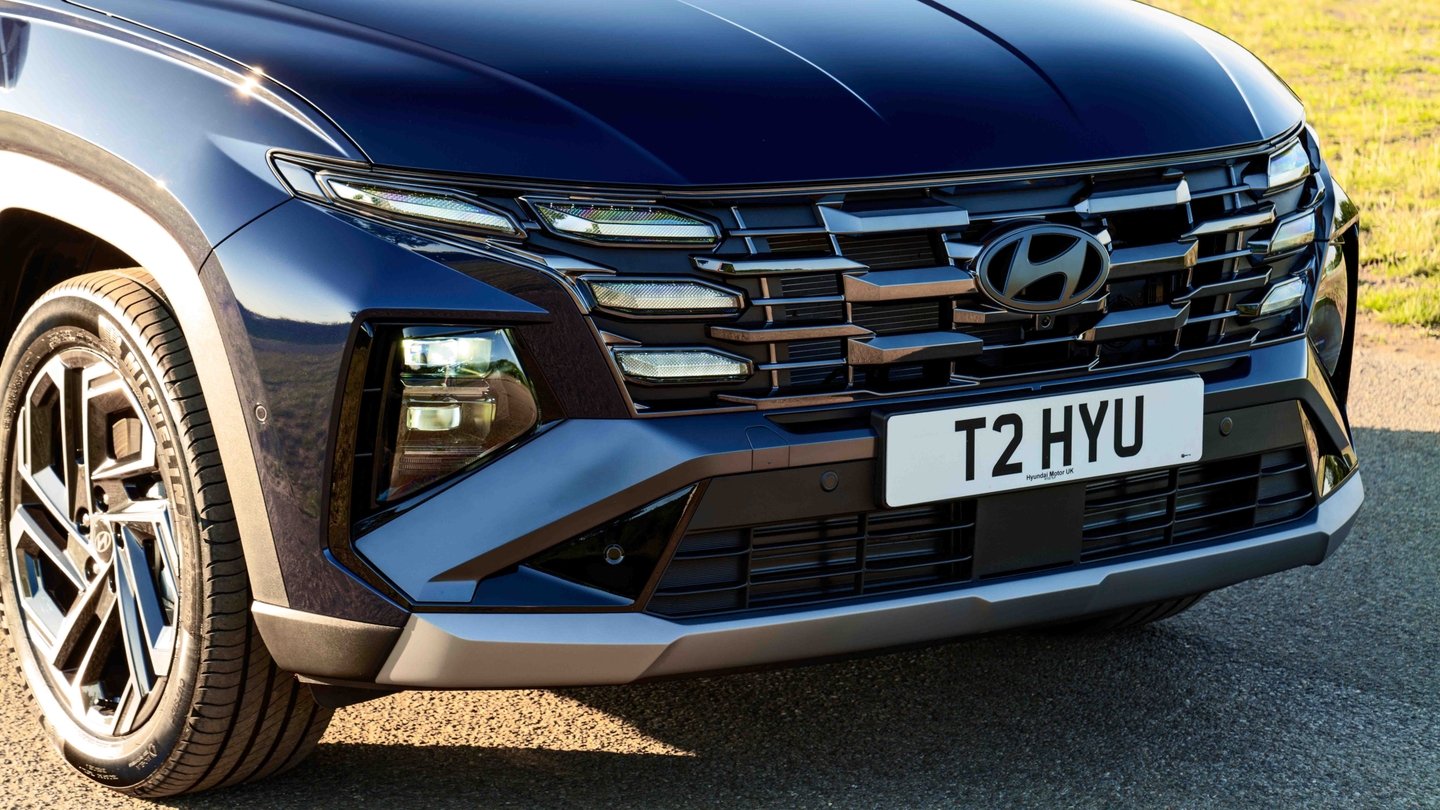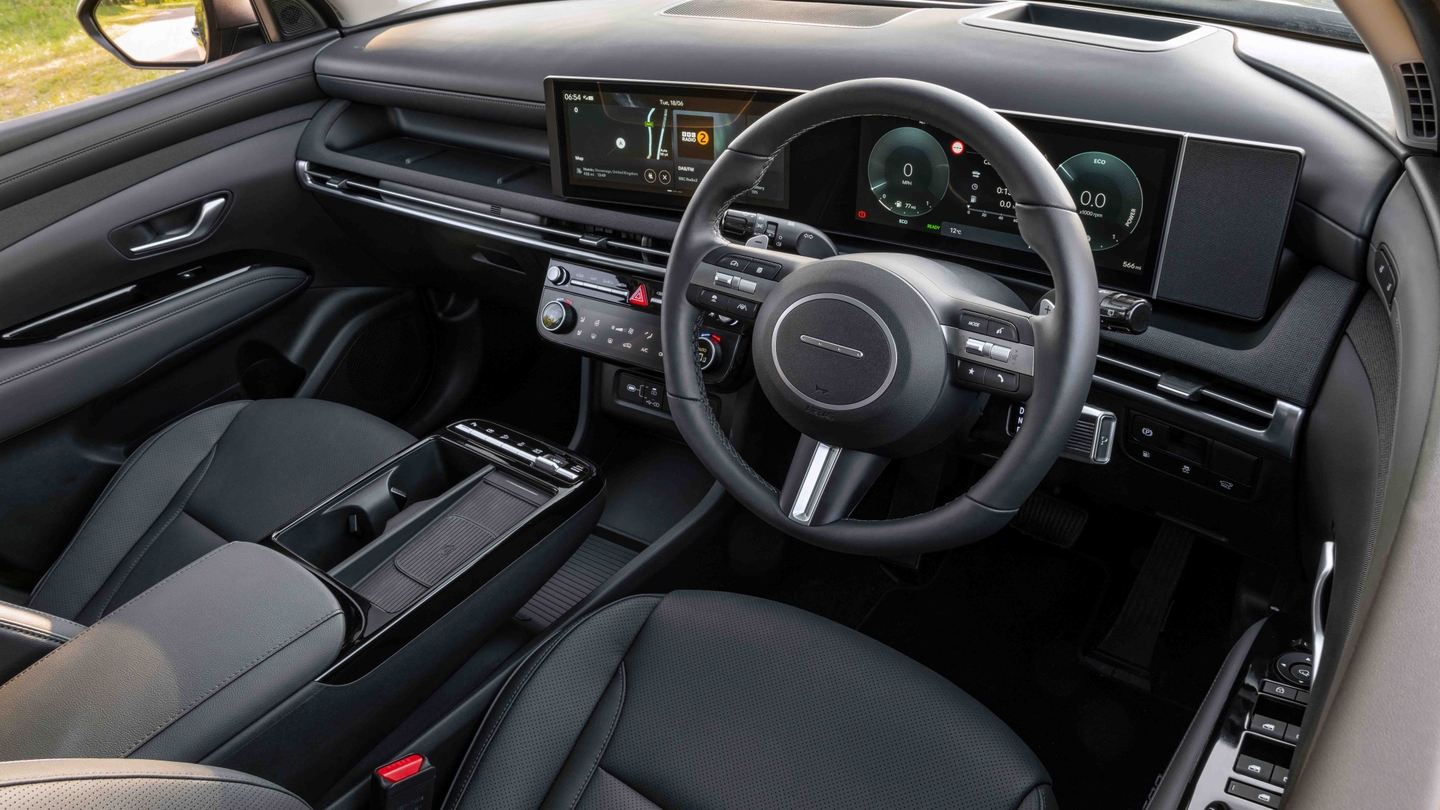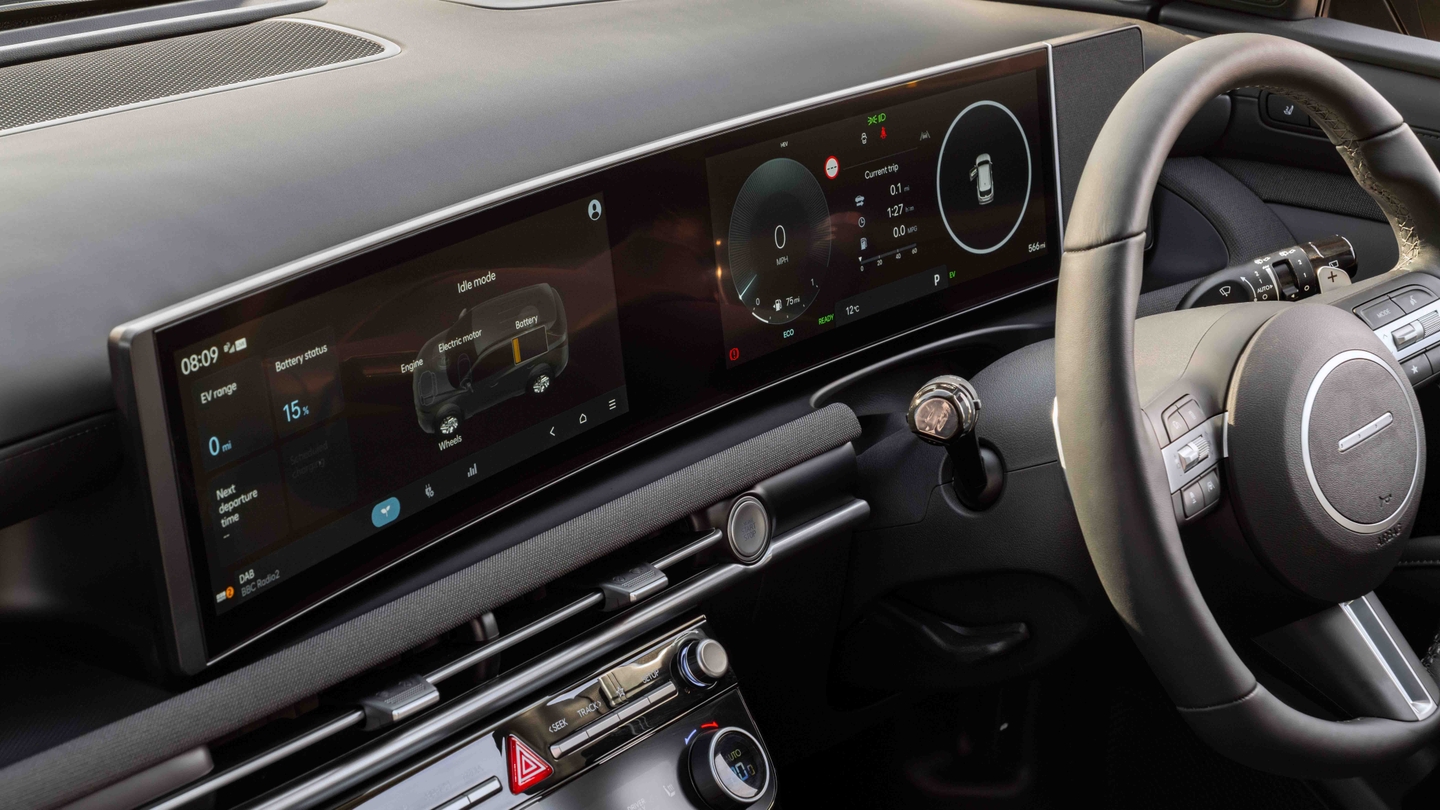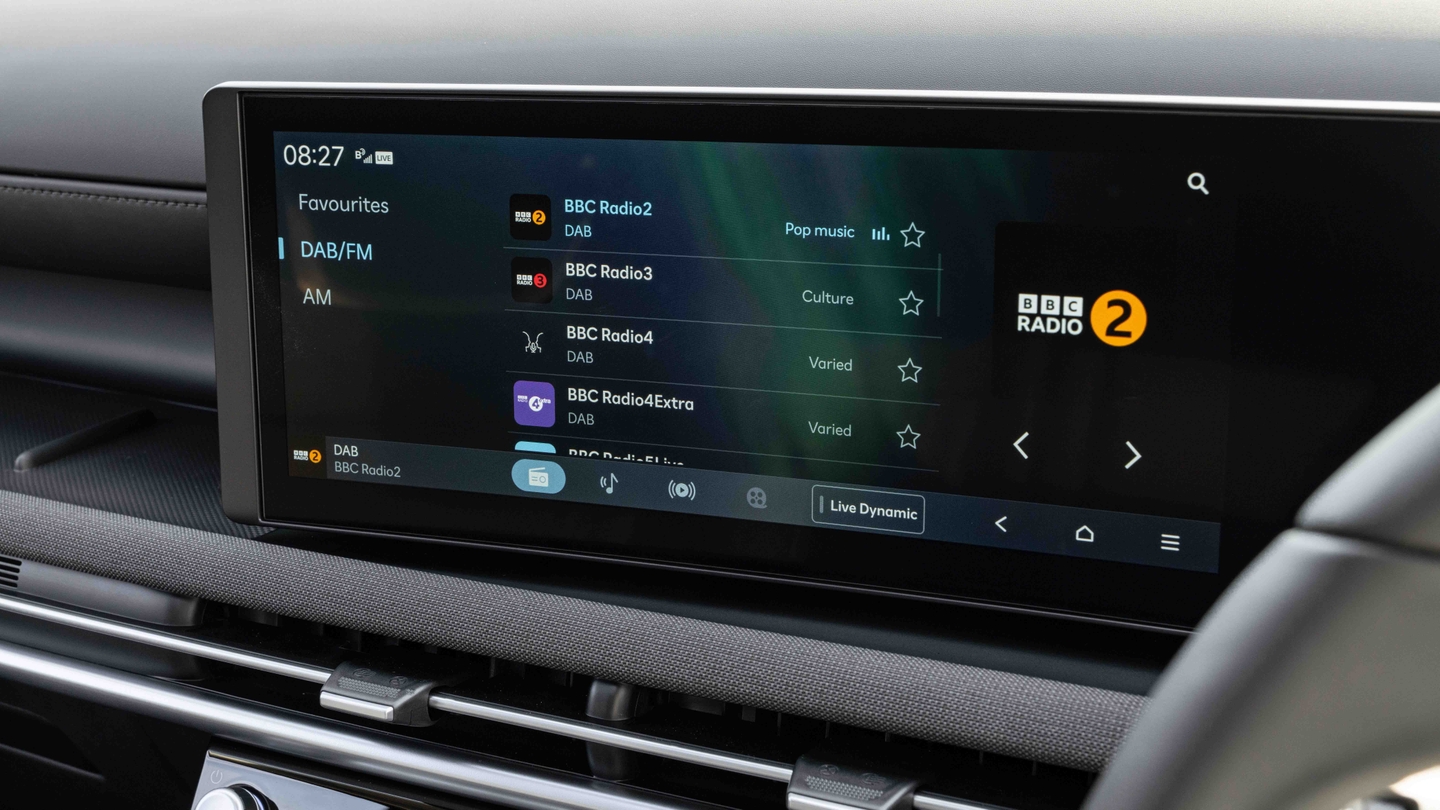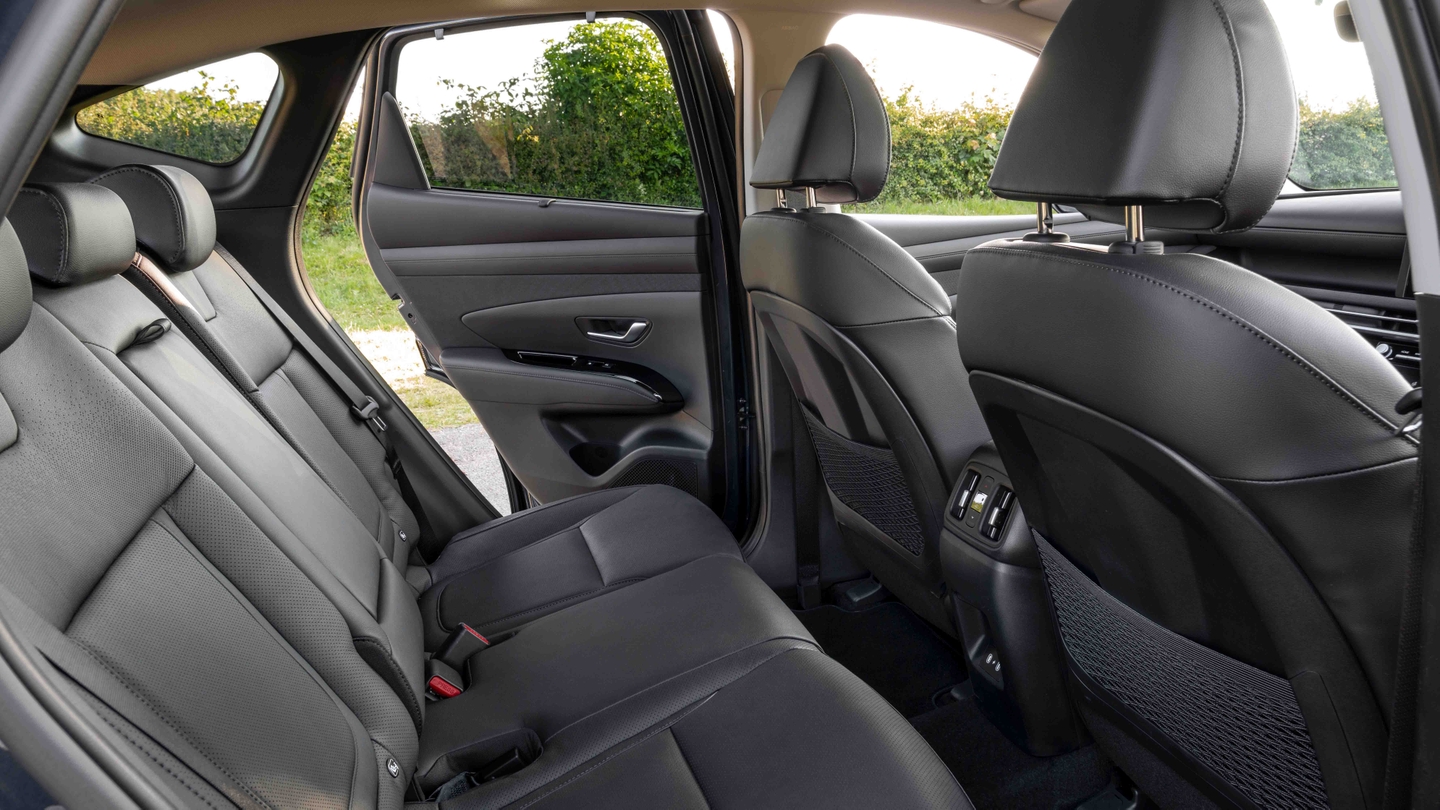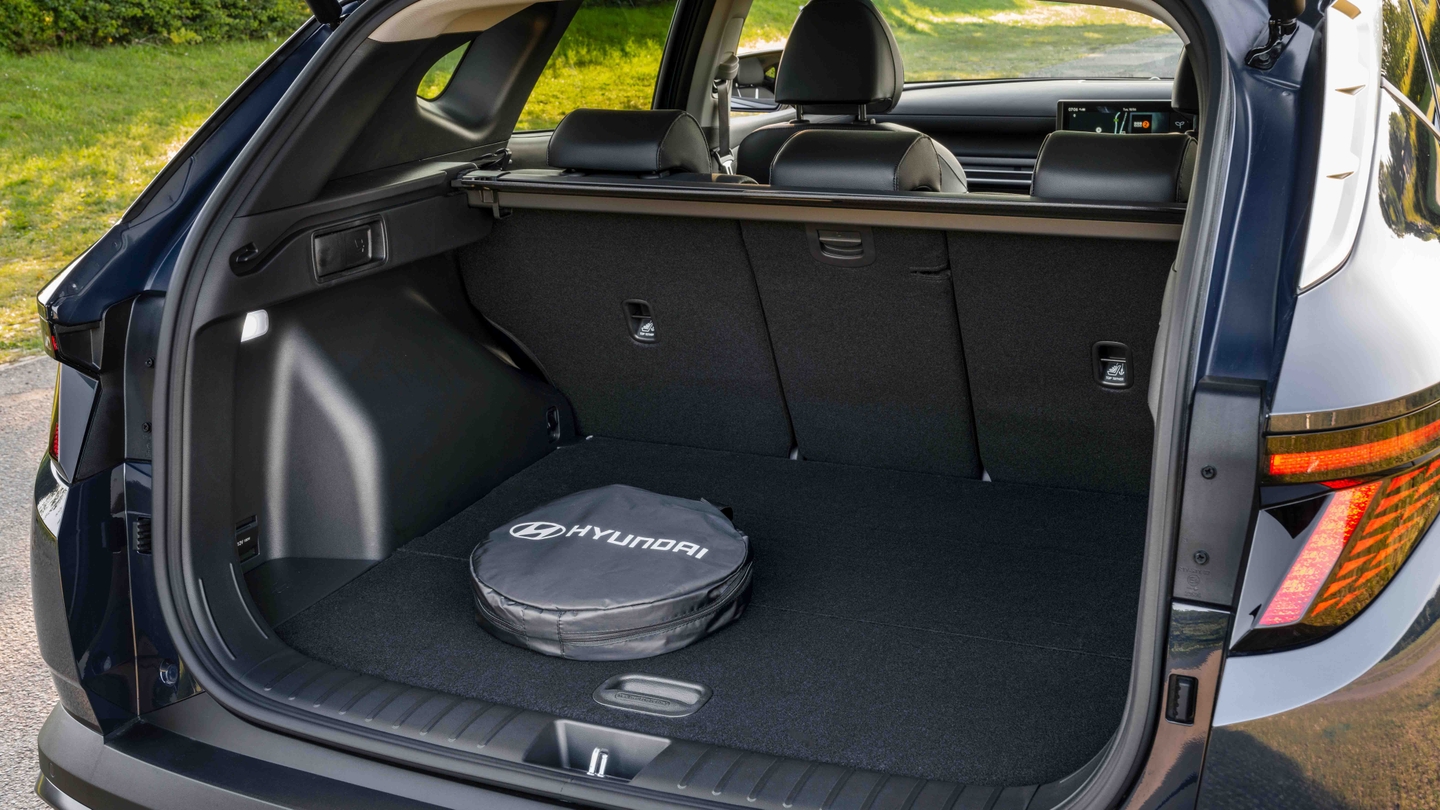
Hyundai Tucson interior, tech and practicality
Gallery
Comfort and visibility
It’s amazing how much of a difference removing the cowl over the dials makes. With all Tucsons getting a smart set of digital dials perched above the steering wheel, Hyundai has removed the shelf that covers them, and now the dashboard feels very open and wide. That feeling of spaciousness is heightened by the slim chrome trim that starts on the centre console, scoots through the air vents and continues into the doors.
The quality of materials is really good, with soft surfaces throughout and cool metal steering wheel trim. N Line versions come with seats trimmed in leather and suede.
Forward and side visibility are also very decent and, while the Tucson’s intricate rear pillars do create blind spots, a rear camera comes as standard and blind-spot monitoring is fitted on all but SE Connect models.
Standard equipment
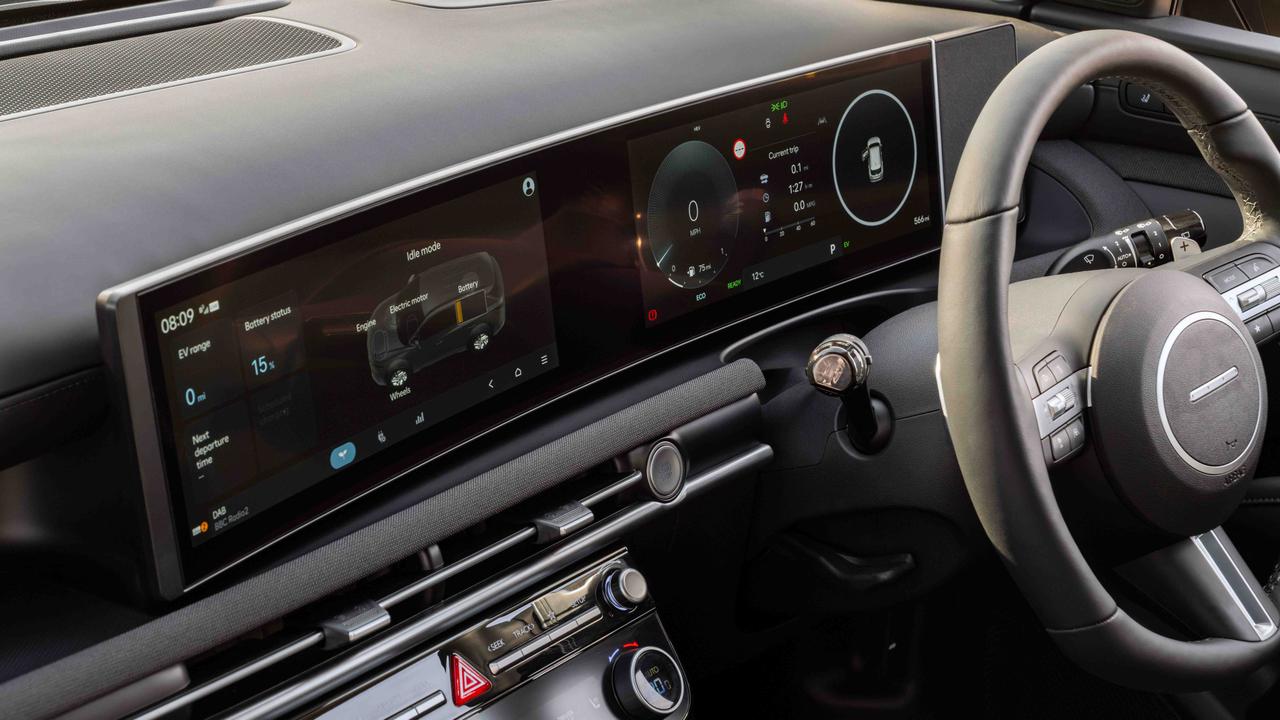
The first step on the Tucson ladder is the SE Connect, which doesn’t skimp on the equipment. There’s two-zone climate control, automatic headlights with high-beam assist, 17-inch alloy wheels, lane-keep and lane-follow assist – meaning the car can stay in a motorway lane without your input – and a pair of 10.25-inch screens up front. In 2024, Advance replaced SE Connect, bringing with it more equipment.
N Line is Hyundai’s sporty trim, a bit like Audi’s S Line and BMW’s M Sport offerings. You get big 19-inch wheels and an even more eye-catching look, while the equipment added over the SE Connect trim includes keyless entry, LED headlights, 64-colour ambient lighting, heated front seats and a wireless phone charging pad.
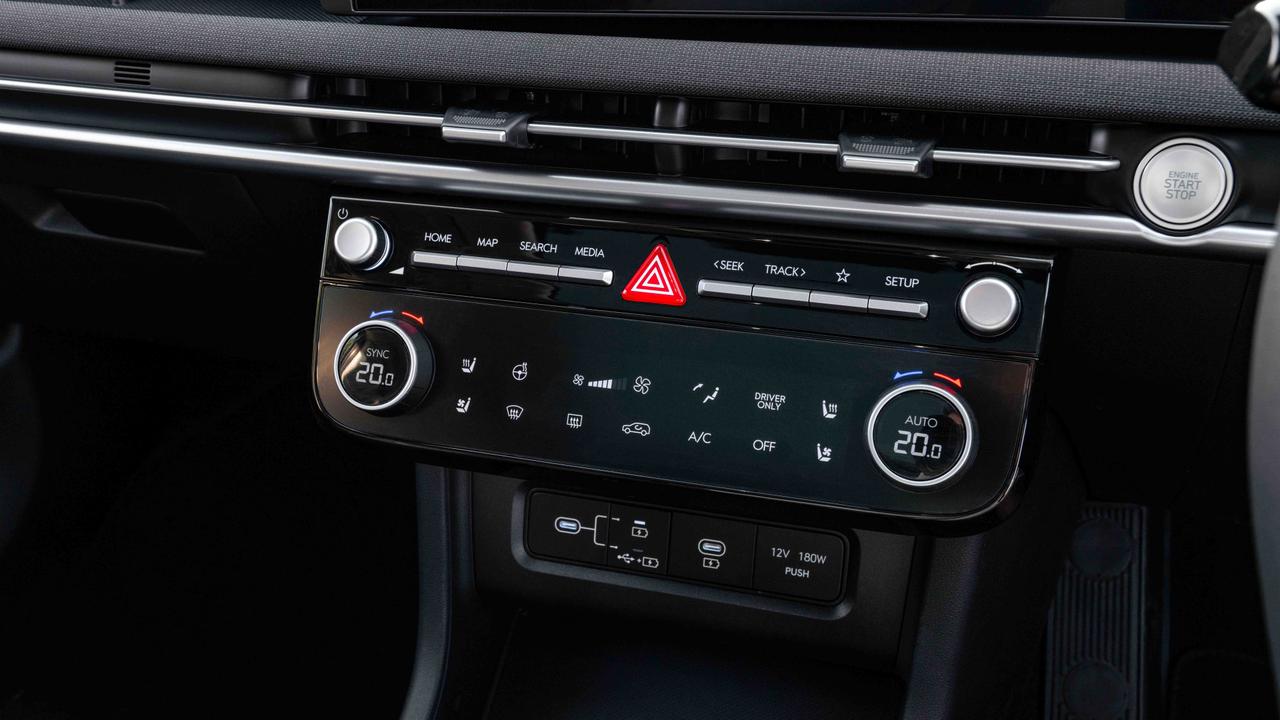
Mid-range Premium splits the two N Line trims and boasts an upgraded Krell sound system, a heated steering wheel, blind-spot monitoring, a system that warns you if it’s not safe to get out – if a cyclist is coming past, for instance – and a system that warns you if a car or pedestrian is behind you when you reverse.
N Line S is next, combining the sporty look and feel with the extra equipment from Premium trim. However, you also get a panoramic sunroof, air con controls for the rear seats, a hands-free tailgate and sunblinds for the rear windows.
Ultimate is the very top of the Tucson tree, and it’s the only model to come with electrically adjustable front seats (with a cooling setting for hot days) and heated rear seats. You also get highway drive assist, which combines several of the driver assistance features to allow the car to take over motorway driving – although you still need to be aware and very much awake.
Infotainment and audio
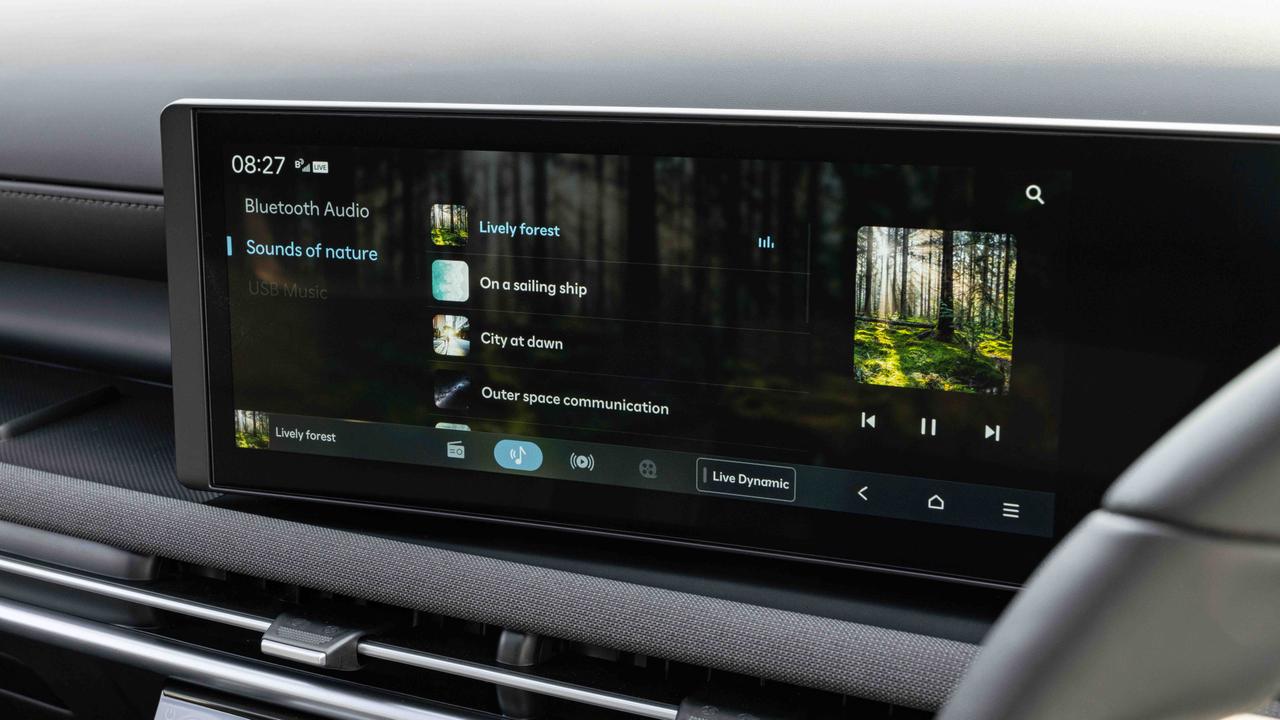
A 10.25-inch touchscreen comes as standard in the Tucson, and it’s packed full of features. The main ones are arranged into tiles that are easy to touch while driving, although some of the icons and shortcut ‘buttons’ are a little on the small side – meaning you might have to take your eyes off the road for longer than is ideal to make sure you prod the right one. But the system is intuitive and the graphics are crisp enough.
Among the clever features is a rear-seat sleeping mode, which turns off the rear audio speakers if you have people asleep in the back. Another small but useful thing is a search icon in the menu that makes it so much easier to find the setting you’re trying to change.
All Tucsons also get a 10.25-inch screen in front of the driver, which is really sharp and very configurable – much more so than the dials in the Ford Kuga and Vauxhall Grandland. As well as being pleasingly customisable, it has a couple of features that show how much thought has gone into the Tucson’s development. On models with blind-spot monitoring, the rev counter is replaced by the blind-spot display when you indicate, and the setting you’re on for the lights and wipers comes up when you change it – a feature that we found surprisingly useful.
If you like bassy music, hunt out a version with the Krell sound system upgrade.
Rear seat space
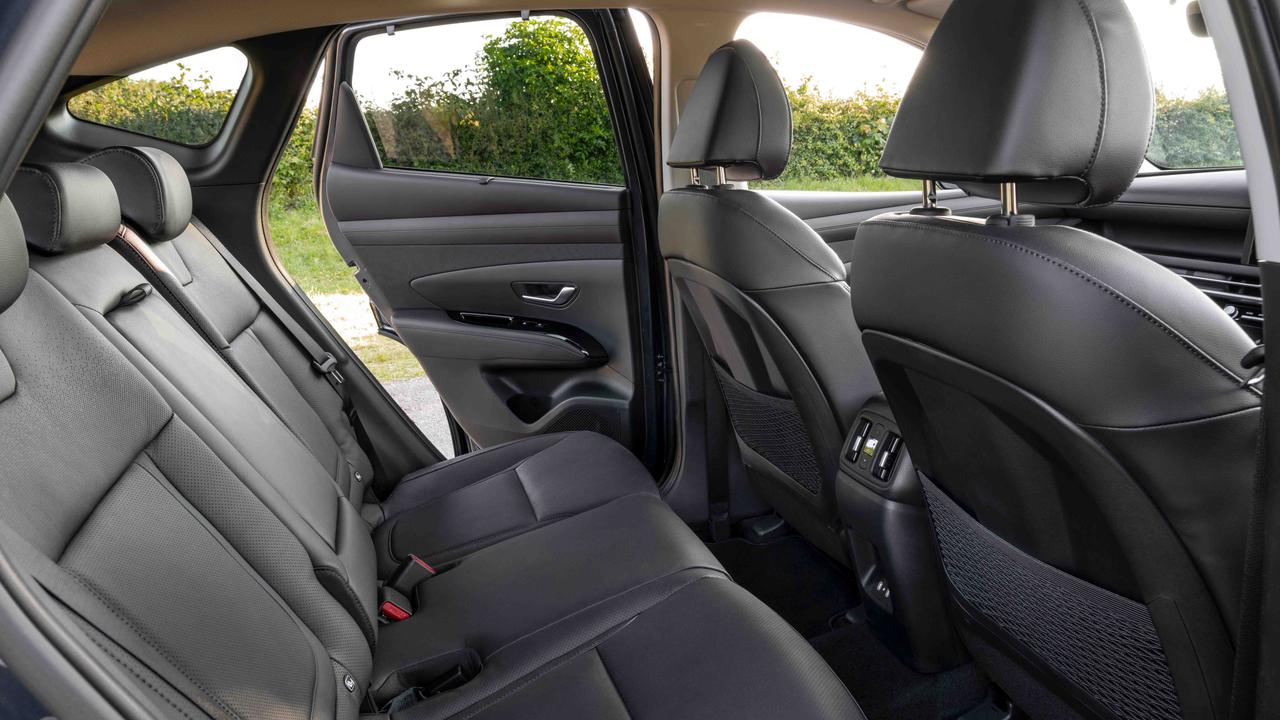
The latest Tucson has 26mm more rear legroom than its predecessor, fact fans. Having roughly an inch more space back there doesn’t sound like much, but it’s enough to make the Tucson feel really spacious. Tall adults have loads of room to stretch out, and there’s room for three adults to sit side-by-side reasonably comfortably. There are a pair of USB ports to charge devices and cupholders in the central seat, but the Tucson misses out on the clever integrated coathangers fitted to the Kia Sportage.
You shouldn’t have much trouble finding the Isofix points, even if they are hidden, and the Tucson’s doors open nice and wide to make it easy to get children in and out.
Boot space
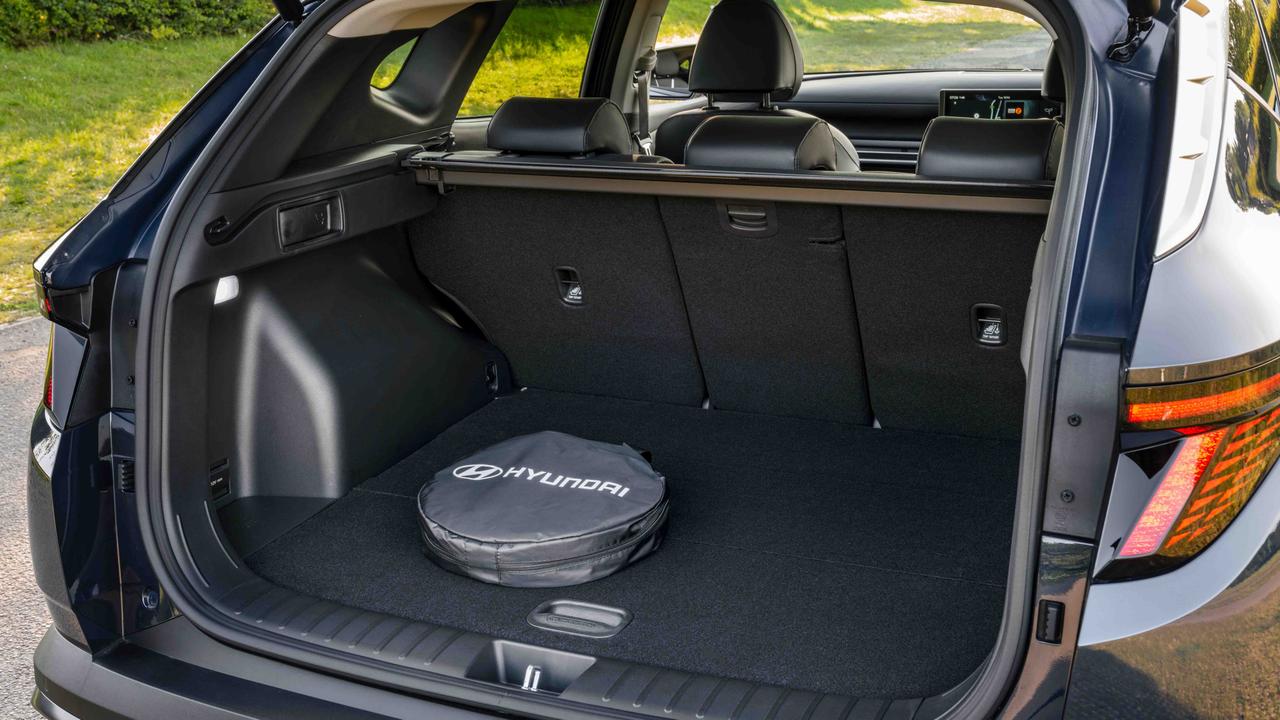
The Hyundai Tucson is class-leading for boot space, with up to 620 litres in the non-hybrid petrol and 616 in the ‘full’ hybrid. Even the plug-in hybrid, which drops to 558 litres, has noticeably more boot space than petrol-powered rivals like the Nissan Qashqai, Peugeot 3008 and Mazda CX-5. Compare the Tucson PHEV to other plug-in SUVs and the difference is more stark – the 3008 Hybrid has a 395-litre boot, for example.
Drop the seats down – which can be done with levers in the boot, or remotely if you have the Ultimate edition – and the boot space swells to 1,799 litres. This shows just how practical the Tucson is – many estates and people carriers don’t match that figure.
The rear seatbacks fold individually, giving you the versatility to drop the middle seat and carry long items like skis while still carrying two rear-seat passengers. This is often only found on premium SUVs.































